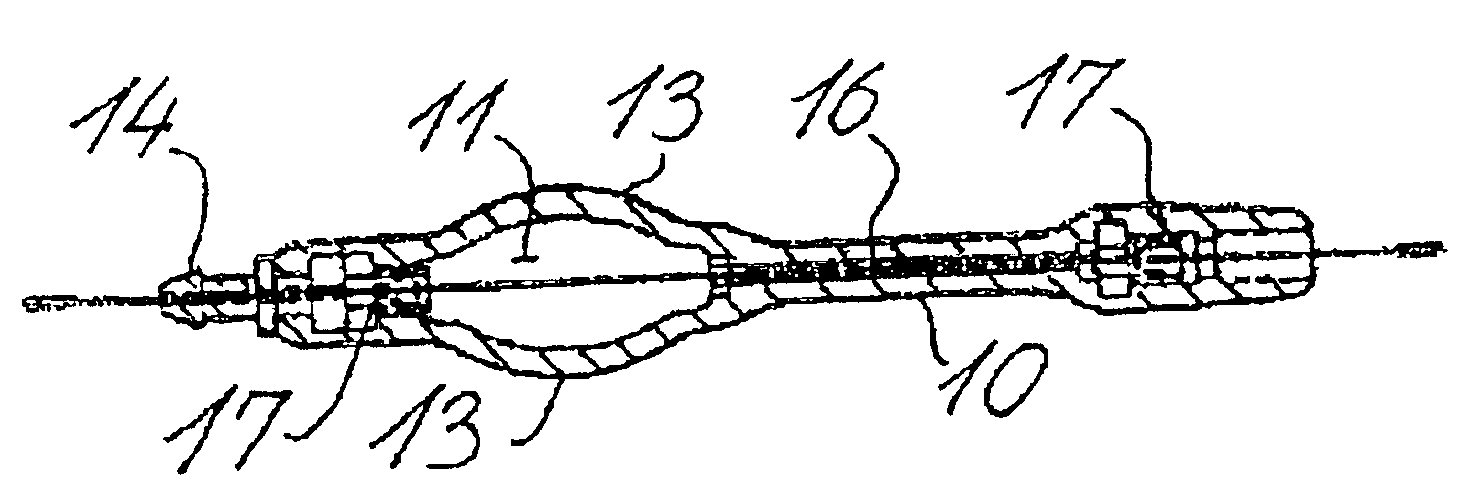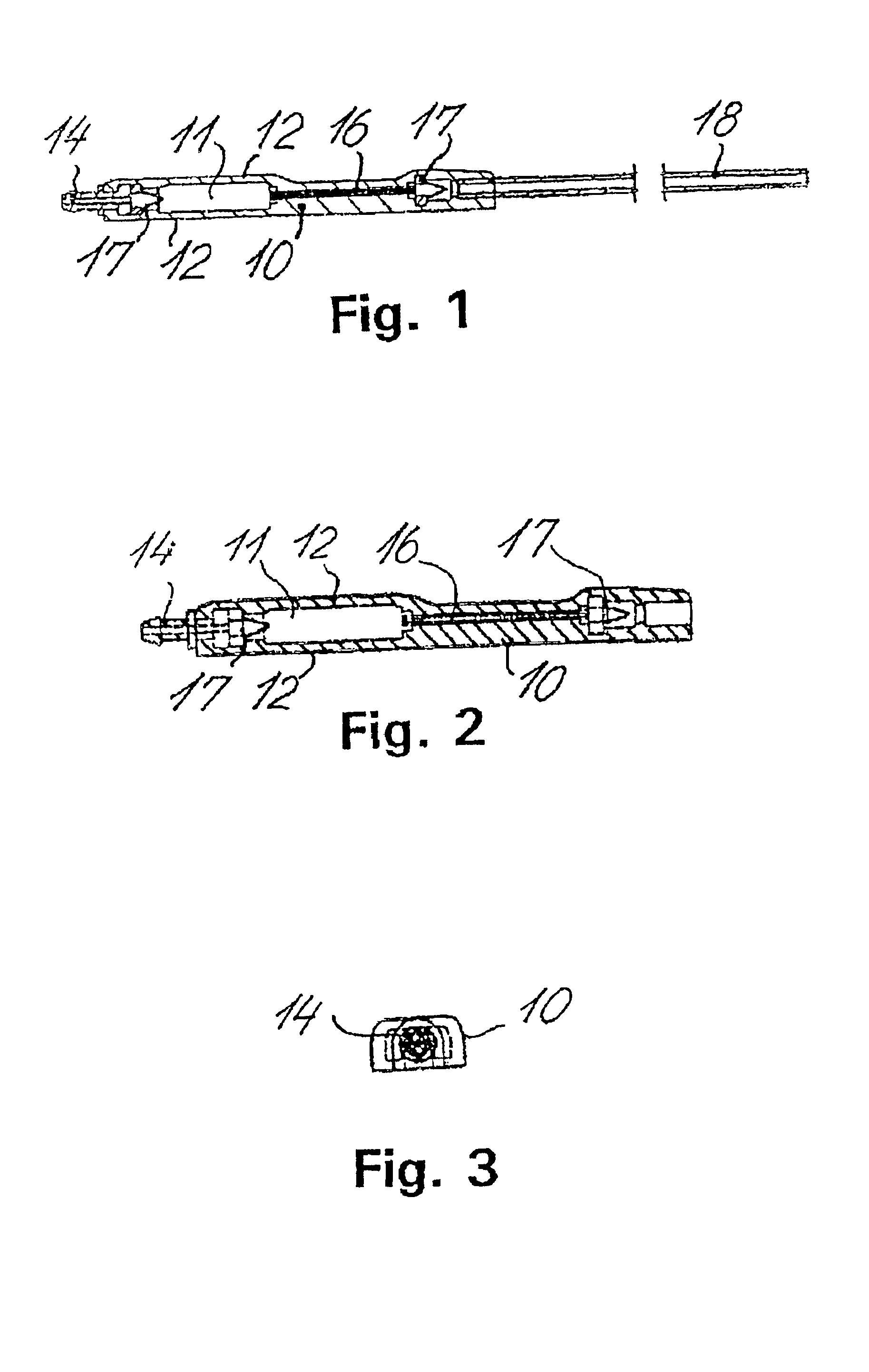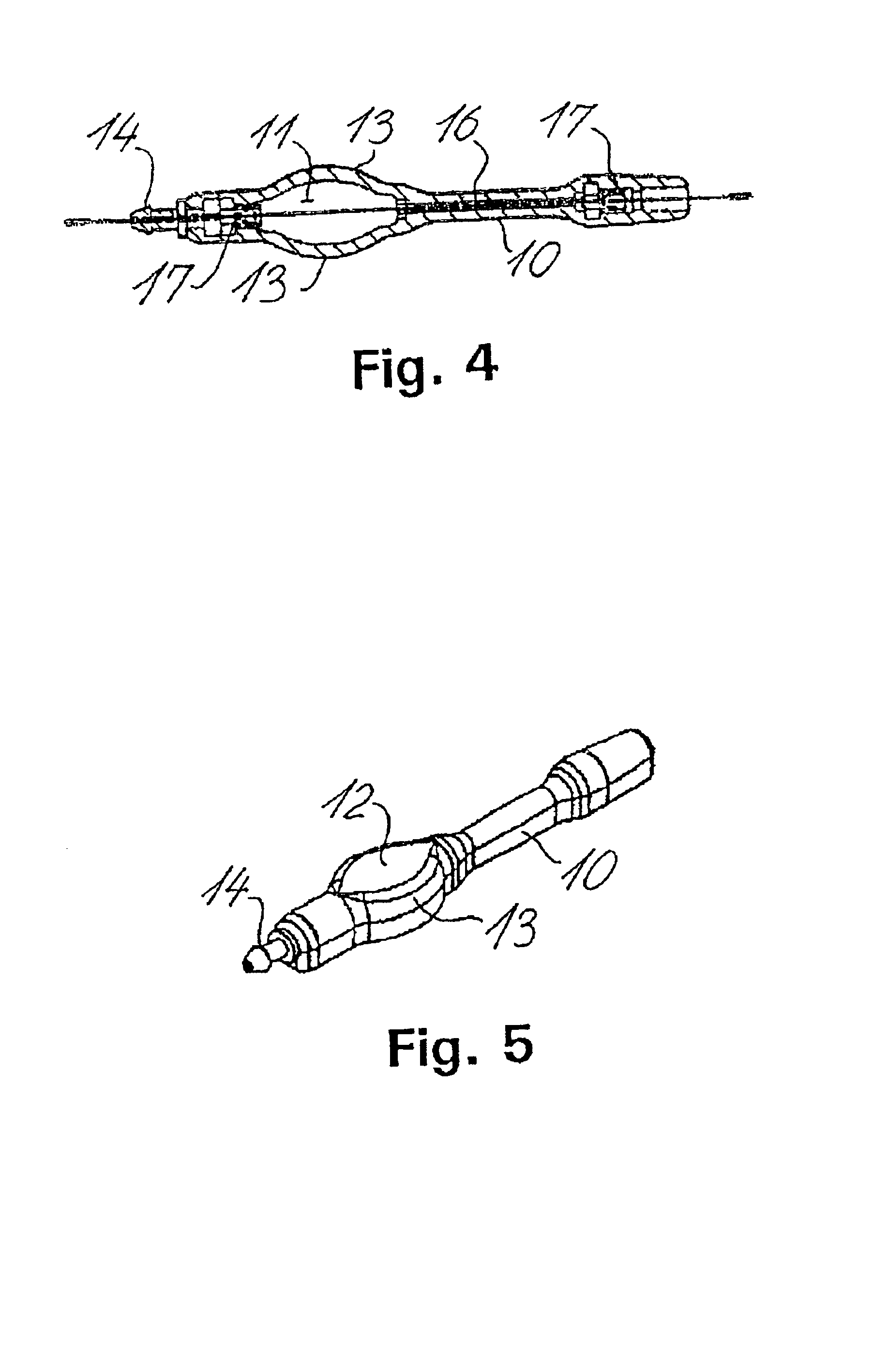Fluid shunt system and a method for the treatment of hydrocephalus
a technology of cerebrospinal fluid and shunt system, which is applied in the direction of wound drain, intravenous device, medical device, etc., can solve the problems of ventricular wall collapse, excessive csf drainage, and the principle of shunting not being an ideal solution
- Summary
- Abstract
- Description
- Claims
- Application Information
AI Technical Summary
Benefits of technology
Problems solved by technology
Method used
Image
Examples
Embodiment Construction
[0052]FIGS. 1-5 illustrate an embodiment of the cerebrospinal fluid shunt system according to the invention. The shunt system comprises a shunt body 10, which is made from a suitable material, such as a silicone rubber. An antechamber 11 may have opposite flat walls 12 made from hard silicone rubber, and opposite domed walls 13, which are made from soft, perforatable, self-healing silicone rubber. At the proximal end (the top end) the chamber walls end in a tip 14, to which a ventricular drain or catheter 15 can be connected and secured. At the distal end of the chamber 11 an inlet to a tubular flow restriction 16 is formed. A check valve or non-return valve 17 are arranged at the entrance to the antechamber 11 as well as at the outlet of the tubular flow restriction 16. Fluidic connection to the sinus sagittalis is provided by a tubular drain 18.
[0053]The ventricular drain 15 is attached to the tip or inlet connector 14, which is provided with an annular bead. The length of the con...
PUM
 Login to View More
Login to View More Abstract
Description
Claims
Application Information
 Login to View More
Login to View More - R&D
- Intellectual Property
- Life Sciences
- Materials
- Tech Scout
- Unparalleled Data Quality
- Higher Quality Content
- 60% Fewer Hallucinations
Browse by: Latest US Patents, China's latest patents, Technical Efficacy Thesaurus, Application Domain, Technology Topic, Popular Technical Reports.
© 2025 PatSnap. All rights reserved.Legal|Privacy policy|Modern Slavery Act Transparency Statement|Sitemap|About US| Contact US: help@patsnap.com



